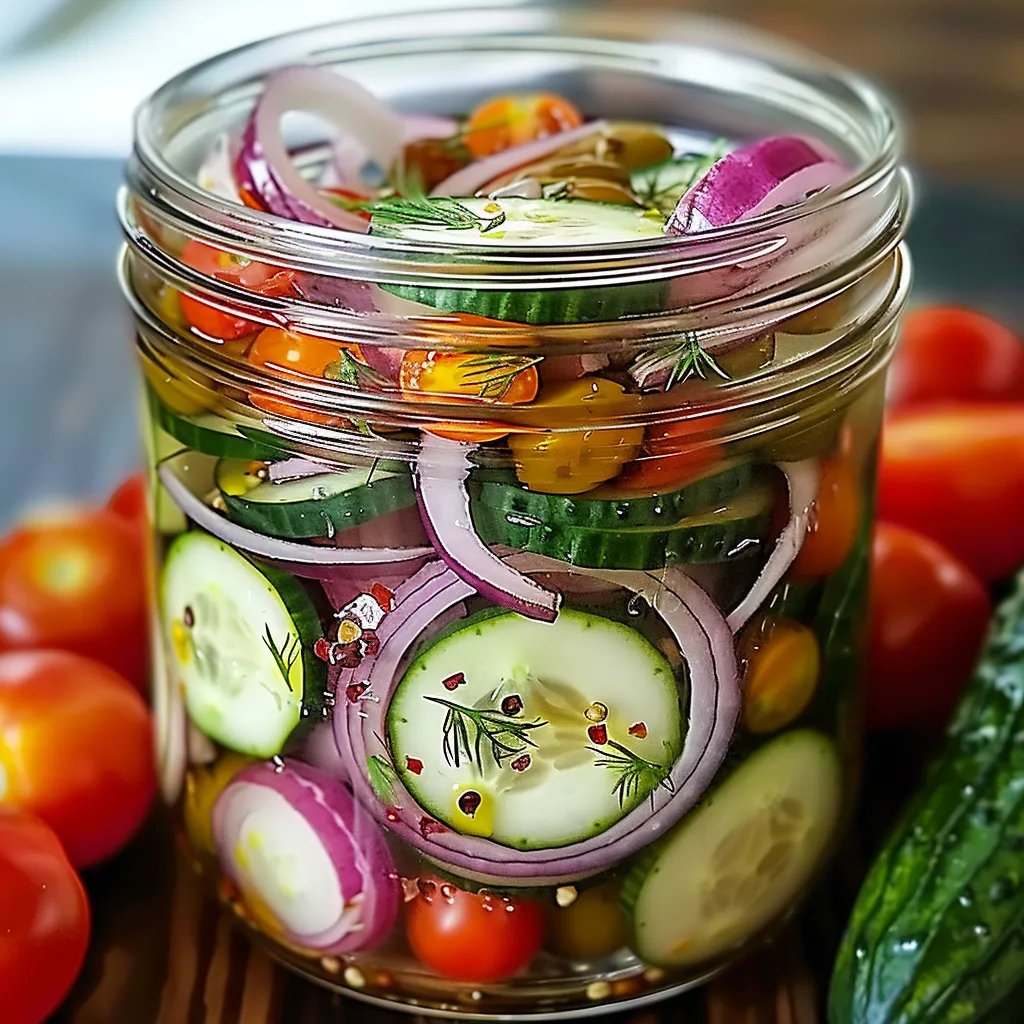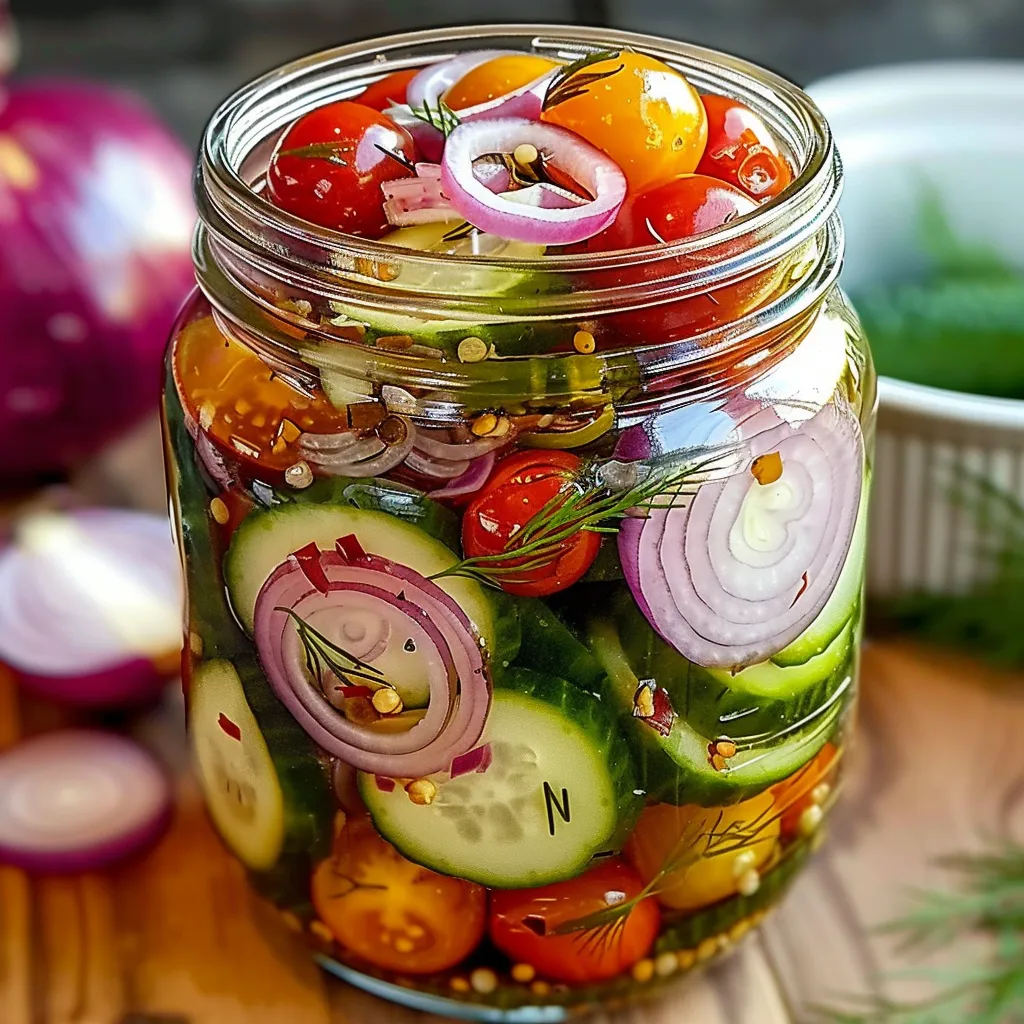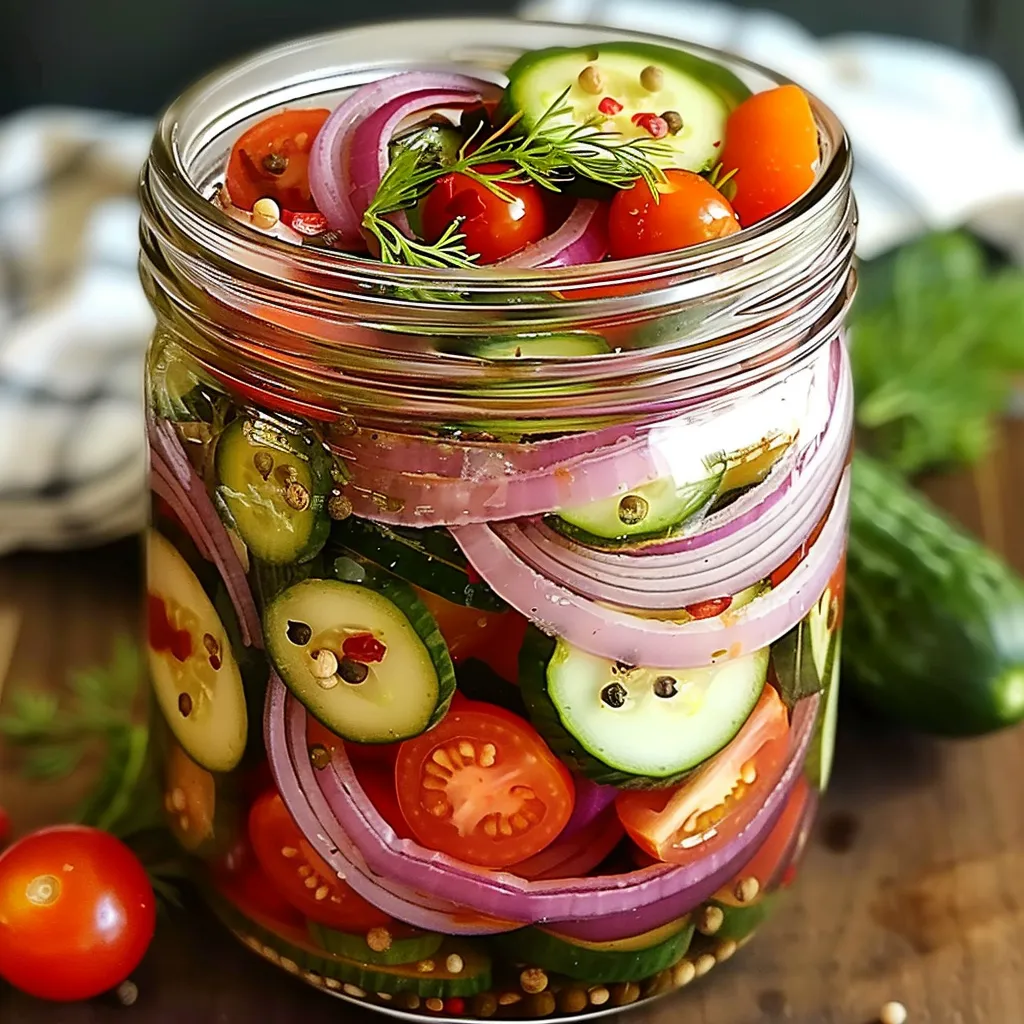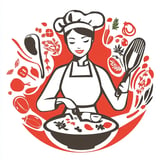 Pin to Favorites
Pin to Favorites
This vibrant pickled vegetable medley brings a burst of tangy freshness to any meal, transforming ordinary produce into extraordinary condiments with minimal effort. The contrast of juicy tomatoes, crisp cucumbers, and pungent red onions creates a perfect balance that brightens up sandwiches, salads, and cheese boards alike.
I discovered this recipe during a particularly abundant garden harvest when I couldn't bear to waste a single cherry tomato. Now it's become my secret weapon for transforming ordinary weeknight dinners into something special, especially during winter months when I crave those bright summer flavors.
Ingredients
- Cherry tomatoes: Whole and firm tomatoes provide the perfect pop of juiciness when pickled
- Red onion: Delivers sharp flavor that mellows beautifully in the brine
- Cucumber: Adds essential crispness, look for firm unwaxed varieties
- White vinegar: Creates the perfect acidic base for pickling
- Water: Dilutes the vinegar to achieve ideal tanginess
- Sugar: Balances the acidity and enhances vegetable flavors
- Salt: Essential for drawing out moisture and developing flavor
- Dried oregano: Adds Mediterranean depth, choose high quality for best results
- Red pepper flakes: Provide gentle heat that builds over time
- Fresh dill: Brings essential herbal brightness, choose vibrant green bunches
Step-by-Step Instructions
 Pin to Favorites
Pin to Favorites
- Vegetable Preparation:
- Wash cherry tomatoes thoroughly and inspect for any stems or soft spots. For the red onion, slice it as thinly as possible to allow maximum brine penetration. The cucumber should be sliced to approximately 1/8 inch thickness to maintain crispness while absorbing flavor. Leaving the skin on adds beautiful color contrast and texture to the final product.
- Brine Creation:
- Combine vinegar, water, sugar, salt, oregano, and red pepper flakes in a saucepan. Heat slowly at first, stirring constantly to ensure sugar and salt dissolve completely before bringing to a gentle boil. This careful heating prevents crystallization and ensures all flavors properly integrate. The brine should be clear and aromatic when ready.
- Hot Pour Technique:
- Position your vegetables in a clean glass jar or container, arranging them somewhat loosely to allow brine circulation. Pour the hot liquid directly over the vegetables while still quite warm, which slightly cooks the outer layers and helps vegetables absorb flavors more effectively. Ensure all pieces are fully submerged to prevent spoilage.
- Dill Integration:
- Add fresh chopped dill after pouring the brine, allowing its delicate flavor to infuse without cooking away. The heat from the brine will release the essential oils in the dill, creating an aromatic experience. Distribute dill throughout the jar for even flavor distribution.
- Cooling and Aging:
- Seal the container and allow it to cool completely at room temperature before refrigerating. This gradual cooling process helps vegetables maintain their texture while absorbing flavors. Although technically ready in two hours, the pickles develop noticeably more complex flavor after 24 hours.
The ruby red tomatoes always remind me of my grandmother's garden. She taught me that pickling was the ultimate act of kitchen resourcefulness. "Nothing goes to waste when you know how to pickle," she would say while preparing similar jars that would line her pantry shelves all winter long.
Storage Wisdom
These pickled vegetables will keep beautifully in the refrigerator for up to two weeks, though the texture gradually changes over time. Tomatoes will slowly release more juices while cucumbers may soften slightly after the first week. For optimal freshness, use glass containers with tight-fitting lids rather than plastic, which can absorb flavors and compromise the pickling process. The brine itself becomes increasingly flavorful and can be reserved to jumpstart your next batch or used as a base for homemade salad dressings.
Flavor Variations
This recipe welcomes creative adaptations based on seasonal availability and personal preferences. For an Asian-inspired variation, replace the oregano and dill with sliced ginger and star anise. Herb lovers might add sprigs of thyme or rosemary alongside the dill. For additional crunch, consider adding thinly sliced carrots or radishes to the mix. Garlic enthusiasts can add 2 to 3 peeled cloves to the jar for an additional flavor dimension that intensifies over time.
Serving Suggestions
These pickled vegetables transcend their role as simple condiments. Chop them finely to create an instant relish for grilled meats or fish. Add them to grain bowls for brightness and acidity that cuts through richer ingredients. They make an exceptional addition to charcuterie boards, providing a welcome contrast to cured meats and rich cheeses. For a simple yet impressive appetizer, spoon them over cream cheese with crusty bread for spreading. The pickling liquid itself can be drizzled over finished dishes as a flavor-enhancing acid component.
 Pin to Favorites
Pin to Favorites
Quick pickling is an easy way to capture the vibrant flavors of summer and enjoy them year-round. It's one of the most satisfying ways to preserve fresh produce!
Frequently Asked Questions
- → How long do pickled cherry tomatoes last?
When stored in a sealed container in the refrigerator, pickled cherry tomatoes can last up to 2 weeks. Their flavor will intensify over time.
- → Can I customize the spices in the pickle brine?
Yes, the spices are completely customizable. You can experiment with herbs like thyme or parsley, or add garlic and whole peppercorns for extra flavor.
- → Do I need to boil the pickling liquid?
Boiling the pickling liquid ensures that the sugar and salt are fully dissolved, and it helps infuse the flavors from the spices. This step also sterilizes the brine.
- → Can I use other vegetables in this recipe?
Absolutely! You can add vegetables like carrots, radishes, or bell peppers to the mix for a more diverse pickled medley.
- → How should I serve pickled cherry tomatoes and cucumbers?
Serve them as a side dish, as part of a charcuterie board, on sandwiches, in salads, or even as a topping for tacos or burgers.
- → Do I need to sterilize the jars?
For quick refrigerator pickles, sterilizing jars isn’t necessary as long as they are thoroughly cleaned. If you plan to store them longer, sterilization is recommended.
